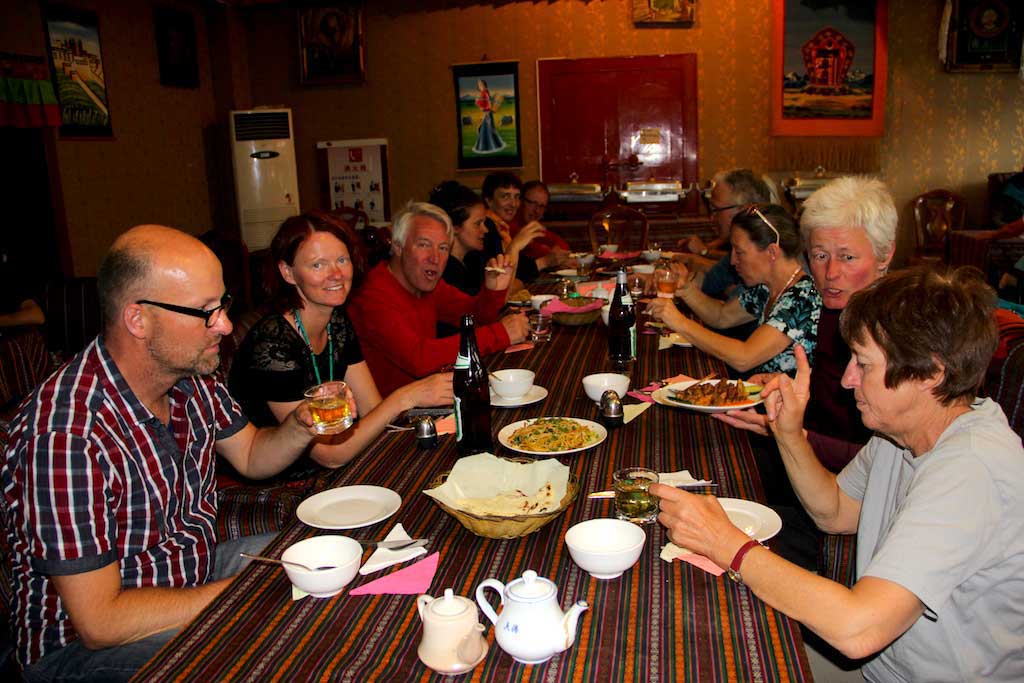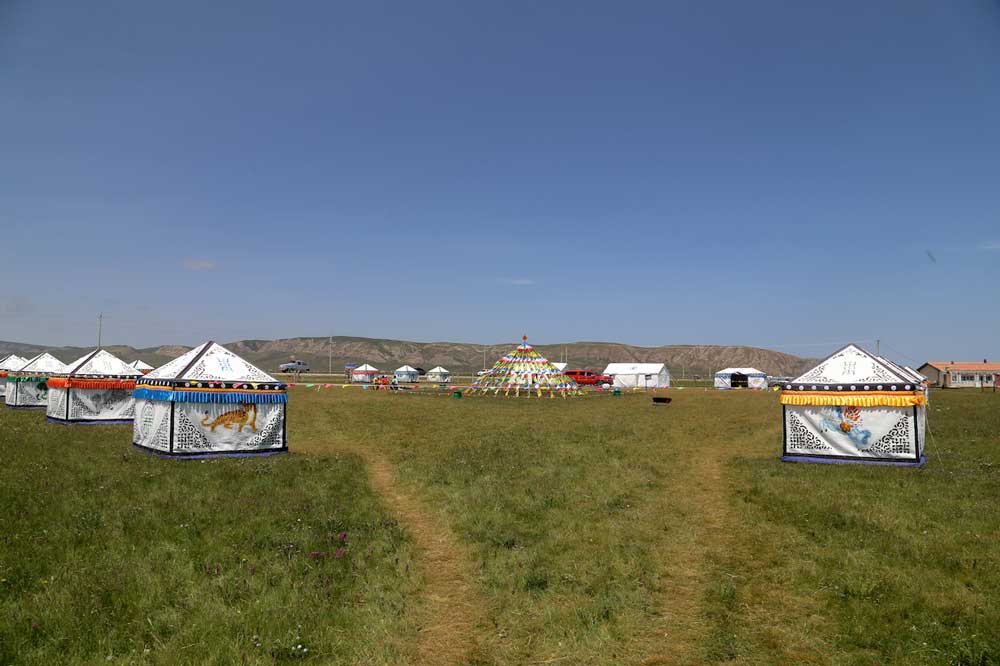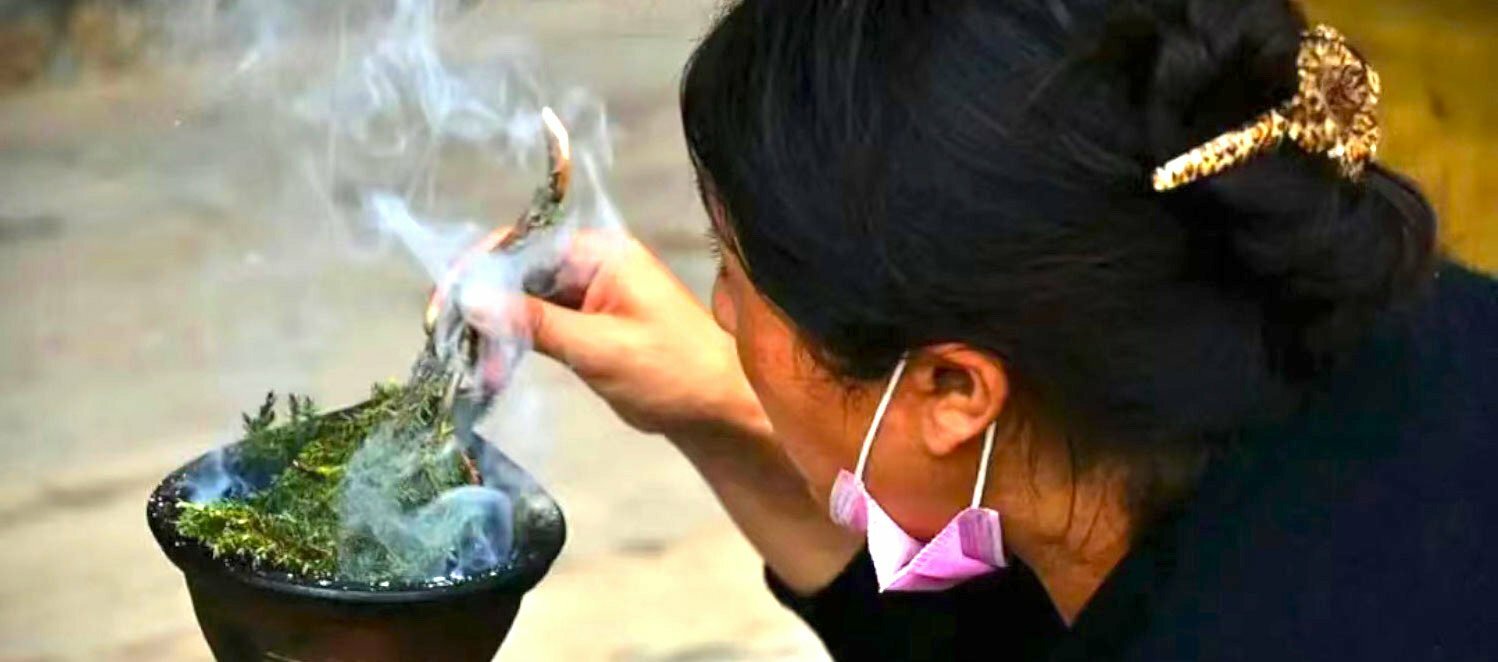Tibetan Food and Cuisine
A good number of travellers presume that Tibetan food and cuisine is vegetarian. Yet in many areas certain green vegetables common in Chinese cooking are, in fact, relatively new. While wild mushrooms, wild vegetables, and a type of tiny wild yam are foraged or gathered, historically speaking. The diet of the Tibetan highlands is one heavy in meat and dairy. At 4,500 meters (14,764 feet), the average altitude of the Tibetan plateau limits both the growing period and the diversity of crops. Today, with the construction of greenhouses, roads, and passes. One can readily find hot weather loving fruits, such as tomatoes and bananas, in many cities or towns.
More rural farming areas, however, are limited by the altitude to root crops such as radishes, turnips, potatoes, and garlic. In some lower altitudes, apples, walnuts, and apricots as well as some types of bak choi are common. The alternating landscape of lowland valleys and high grasslands has not only been a longtime determining factor in diet, but a driving force in regional trade and commerce as well. To this day, nomads still make trips down the mountains (and vice versa) to sell or trade butter and yogurt for that quintessential Tibetan staple food: barley. A low temperature limits Tibetan Food and Cuisine.
Tibetan Staple Food: Tsampa རྩམ་པ།
Tsampa, pronounced with a ‘ts’ sound similar to that of ‘tsunami’, is the Tibetan name for barley flour. People have been cultivating barley on the Tibetan plateau for hundreds of years—a practice that emerged independently of barley cultivation in Europe. Barley is planted in March and harvested in August. It is then roasted and taken to mill. Traditional, stone powered, water mills are still widely used in farming villages across the Tibetan Plateau. It is here that the barley is ground into the fine powder eaten by humans, while coarsely ground barley is often used as feed for livestock and pets.
Tsampa is eaten differently everywhere you go, but it typically involves combining barley flower, dried yak cheese, butter, and a little bit of sugar into a shallow bowl. These ingredients are then mixed by hand with hot milk tea and rounded into a dough or a paste. While tsampa can be eaten alongside soup, or with condiments. Such as onions and salt, it is most commonly enjoyed alone. Tibetans extoll the health benefits of tsampa and though it is most commonly a morning Tibetan food, some people eat this staple grain three times a day every day!
Barley is also used in the fermentation of different types of wines, as well as ‘chang’, a type of locally brewed barley beer that has the consistency of gruel. This traditional drink is often served at weddings and new year festivities.
Butter Tea, Thukpa, and Momos ཇ་བསྲུབ་མ། ཐུག་པ། མོག་མོག
An adventure in Tibet will hardly be an adventure if you do not try a cup of Tibet’s famous butter tea! Traditionally made in a churn, today butter tea is usually mixed in a blender by combining milk tea, butter, and salt. Butter tea is to Tibet as natto is to Japan, as escargot is to France, and molé is to Mexico. Think of it like soup, and be prepared for the unusual!
As for dinner, in most places on the plateau, Thukpa and Momos come standard. Thukpa is cooked different regionally, but usually involves some version of a soupy, hand-pulled, thick noodle dish with vegetables. Momos, a special style of Tibetan dumpling stuffed with anything from yak meat to Tsampa and sugar, can be found as far south as Kathmandu, Nepal in the Himalayan foothills.
Droma གྲོ་མ།
Another interesting must try is a type of tiny wild yam called ‘droma’. Small rodents stockpile these yams in underground storehouses for winter. In the late fall, women can be seen on the hillsides with wooden sticks tapping the ground to identify the hollow spots where the storehouses are located! The yams are then dug up, steamed, and served with butter and sugar as a delectable dessert.
Aside from these common dishes, you are bound to find local specialties wherever you travel. In Minyak, Kham, for example, willow branches are stripped and placed into yak milk. Where the acid on the bare branches reacts to form a type of fondue-style cheese. In the border regions you can see the influence of Tibet’s renowned culinary neighbors. India and China, and in comparison, Tibetan cuisine may seem rather simple. Yet the quality of the ingredients, many of which are still grown or raised without pesticides, is impeccable. Free-range, organic, grass-fed, yak meat is not an expensive dream. And thick, freshly made yogurt is sold at roadside stands around nomadic areas. Check our article about how to travel in Tibetan areas focused regions outside of Tibet autonomous region.
Tibetan Food Influenced by Buddhism
While it may seem paradoxical that a culture so influenced by Buddhism boasts a carnivorous diet. A closer look reveals that even, and especially, in food values is Buddhism’s influence apparent. Yaks are treated with respect and there is an unspoken rule prohibiting the slaughter of one’s own yaks. Yaks are traditionally sold to Muslim butchers (meaning that a lot of traditionally sourced yak meat is halal), or in some areas are not sold for slaughter at all. Monks and lay people alike abstain from eating meat on religious holidays.
In fact, the process of separating gluten to make substitute meat was practiced by monks in ancient Tibet. Furthermore, many Tibetans eat only yak, and a very small minority consume fish. While a yak can feed a whole family for over a month, a single fish can feed only one person. The act of eating a fish, then, necessitates the selfish taking of a life. A Tibet travel plan may lead you to taste all of our best offers on roof of the world. Thanks for reading Tibetan Food and Cuisine blog! And, we also think that our travel tips page is more helpful for you if anyone plan a trip to Tibet recently.










